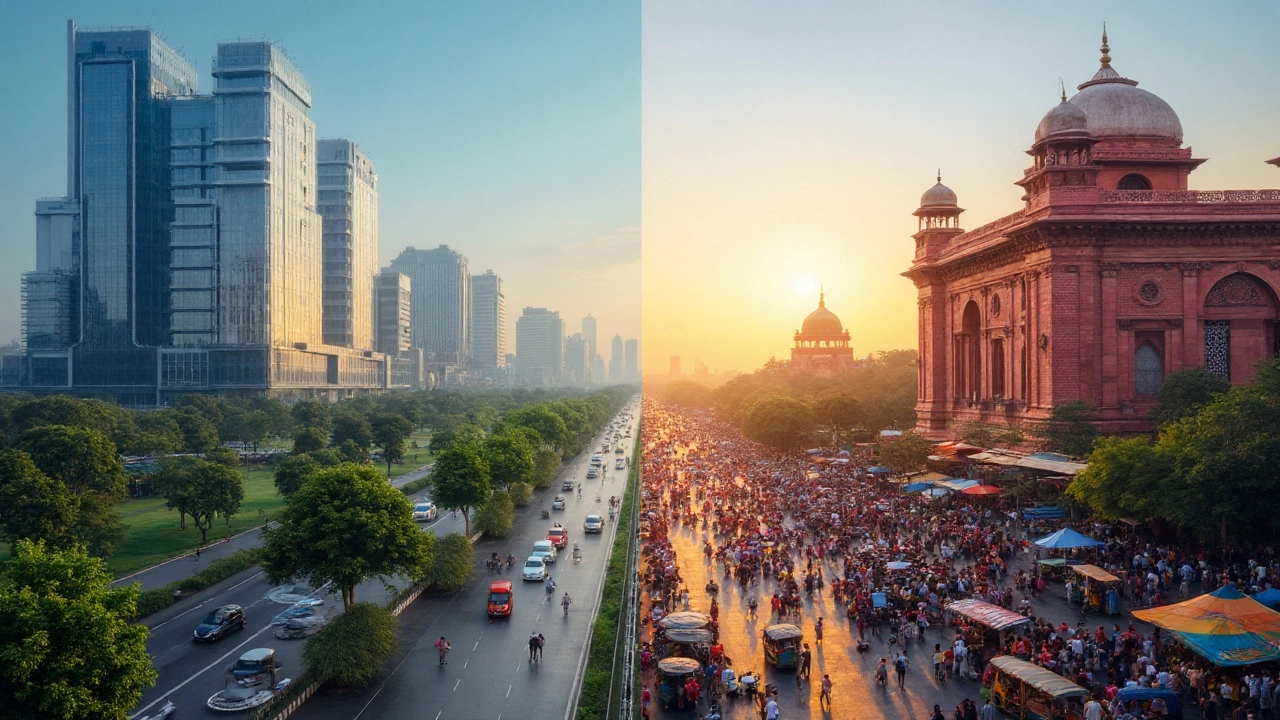
Explore a data‑backed look at whether South India is richer than North India, comparing GDP, per‑capita income, HDI, FDI, literacy and more.
When exploring South vs North India, a side‑by‑side look at the country’s two major regions. Also called India’s regional split, it helps travelers decide where to go next. If you’re wondering which side of the country fits your travel style, the South vs North India comparison can guide you.
The climate, temperature ranges, rainfall patterns and seasonal shifts is the first thing that jumps out. South India basks in a tropical, humid environment almost all year, with monsoon bursts that keep the coastline lush. North India, on the other hand, swings through four distinct seasons – hot summers, cool winters, a chilly Himalayan chill and a rainy monsoon. This contrast means a beach holiday in Goa feels worlds apart from a trek in Ladakh. In semantic terms, South India offers tropical beaches, while North India offers Himalayan peaks.
Next up is cuisine, regional dishes, spice blends and cooking techniques. Southern plates lean on rice, coconut, tamarind and mustard seeds – think dosas, idlis and fiery Chettinad curries. Northern kitchens favor wheat, dairy, and richer gravies, serving up naan, butter chicken and kebabs. The flavor profiles reflect the climate too: cooling coconut in the south, heart‑warming ghee in the north. Travelers who love fiery seafood will gravitate south, while those craving hearty meat stews might head north.
Culture is another major divider. The culture, festivals, languages, arts and social customs varies from the Dravidian traditions of Tamil Nadu to the Indo‑Aryan heritage of Uttar Pradesh. South India celebrates Pongal, a harvest festival marked by sweet rice dishes and kite flying. North India bursts with Holi, Diwali and Navratri, each lighting up streets with colors and fireworks. Language plays a role too – Kannada, Malayalam and Telugu dominate the south, while Hindi, Punjabi and Urdu echo in the north. These cultural layers shape everything from clothing to hospitality.
When you map attractions, heritage sites become a clear indicator of regional flavor. The south boasts the stone marvels of Hampi, the backwaters of Kerala and the temple towns of Tamil Nadu. The north offers the iconic Taj Mahal, the desert forts of Rajasthan and the sacred city of Varanasi. Both sides are rich in UNESCO‑listed wonders, but the story each tells differs: South India’s architecture often features towering gopurams and intricate stonework, whereas North India’s monuments lean toward marble grandeur and Mughal influences.
Travel logistics also shift between the two. South India’s rail network links coastal cities like Chennai, Kochi and Bangalore, making train travel a scenic, budget‑friendly option. North India’s extensive highway system and numerous domestic airports connect major hubs such as Delhi, Jaipur and Amritsar, catering to faster, air‑based journeys. Knowing which transport mode aligns with your itinerary can save time and money.
Finally, the vibe of everyday life differs. Southern towns tend to move at a relaxed rhythm, with tea stalls and open‑air markets inviting lingered conversation. Northern cities pulse with a bustling energy, where street food carts, bustling bazaars and rapid urban growth dominate. Whether you prefer a laid‑back beach lounge or an energetic city scramble, the regional temperament will shape your experience.
All these elements – climate, cuisine, culture, heritage and travel logistics – intertwine to create the distinct identities of South and North India. Below you’ll find a curated set of articles that dig deeper into each aspect, from safety tips and seasonal guides to cost breakdowns and must‑see destinations. Dive in to see which side of India matches your travel style and start planning your next adventure.

Explore a data‑backed look at whether South India is richer than North India, comparing GDP, per‑capita income, HDI, FDI, literacy and more.